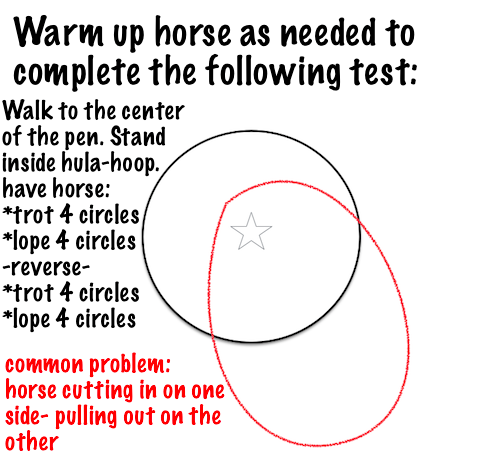“Hey Stacy, I work with 4-H kids in upper MN. A lot of us are just getting back in to riding after a very cold and long winter off. I am constantly thinking of these kids and praying for their safety. I was curious if there are any tips or guidance you could send our way as to how to prepare for the first ride. I would love to share it with them. Thank you so much! ~Tanya M.”
Tanya- Many people face this same issue as spring rolls around. I know when I was a kid that the last thing I wanted to do in the spring was GROUNDWORK! I wanted to RIDE! In fact, I felt safer on top of an out of control horse than on the ground beside one so I would just climb on without a plan.
Usually the horses are pretty fresh but out of shape after the winter. One of the first things I would do if I were to work with a group of these kids would be to set up a challenge. A test of some kind with groundwork they had to complete before they were allowed to ride.
It could be something as simple as the warm up test listed here of lunging nice round circles or as complex as an in-hand trail class. The key is to tell the kids what will be required, show the kids how to have success and then hold them accountable by not letting them ride until they can complete it.
I have been to many early spring ‘warm-ups’ where horses are unloaded, tacked up and the kids are boosted on to very fresh horses. Doing that is the opposite of yesterdays blog on prevent, prevent, prevent.
When you put the horse and the child in a situation where there is a high risk of bucking, running off, or failure to guide there are not only consequences TODAY but seeds are planted in both the horse and the child; sometimes the seeds of fear are born in the rider and other times the seeds of defiance are born in the horse.
Not everyone sees the value of groundwork and prevention….at least not before a problem occurs.
P.S.-Even on a simple pattern like the one shown here you can set rules. For example, if the horse trots three times and then breaks to the lope they have to start again. Or if the horse breaks from the lope to the trot on the second lope circle…they have to start again. Having to start over becomes a big incentive to get it right the first time…and practice at home.
6 Comments
Leave a Comment

FREE PDF DOWNLOAD
WHY IS MY HORSE...?
100% Private - 0% Spam
No one taught you the skills you need to work through these things.
Riders often encounter self-doubt, fear, anxiety, frustration, and other challenging emotions at the barn. The emotions coursing through your body can add clarity, or can make your cues indistinguishable for your horse.
Learning these skills and begin communicating clearly with your horse.
Click here to learn more.


I’m up here in Bar Harbor, Maine. We use the winter to tune up on ground work and manners, so we keep the respect and conversation going, so the first few rides aren’t so rough in the spring
I always work with my horses on the ground when the weather is too bad to ride. In hand trail patterns, side passing, stepping over obstacles. I ride bareback at a slow walk around my yard when the weather is bad, just to keep the bond with my horses. Feed them carrots and scratch them while the rain pours down. I can’t imagine just letting my horses go for several months with no handling.
That is such good advice! You just gave me the exact answer I need for my 30 something friend who is all eager to ride my mare…..on the road no less (because there’s too much snow anywhere else) I didn’t know how to tell her no, for the reasons you mentioned and she’s not that great a rider either. Thank you!
Stacy, one question I have been pondering for a bit… I have been watching your DVDs and following your blog for a few months now. I have seen you do the four-leaf-clover exercise and now this one. Do you have any other little exercises you like to do, from the ground or the saddle? It would be great to have a diagram of each them if you have more than just those two. Thanks!
I t is very hard to not just get on your horse after a long winter. But, I like to prevent too and this is a great exercise. Thankyou Stacy!
So excited to share this with the kids!!~ Thank you so much for your reply and advice!!!~ Date: Thu, 3 Apr 2014 21:03:44 +0000 To: tmn_81@hotmail.com